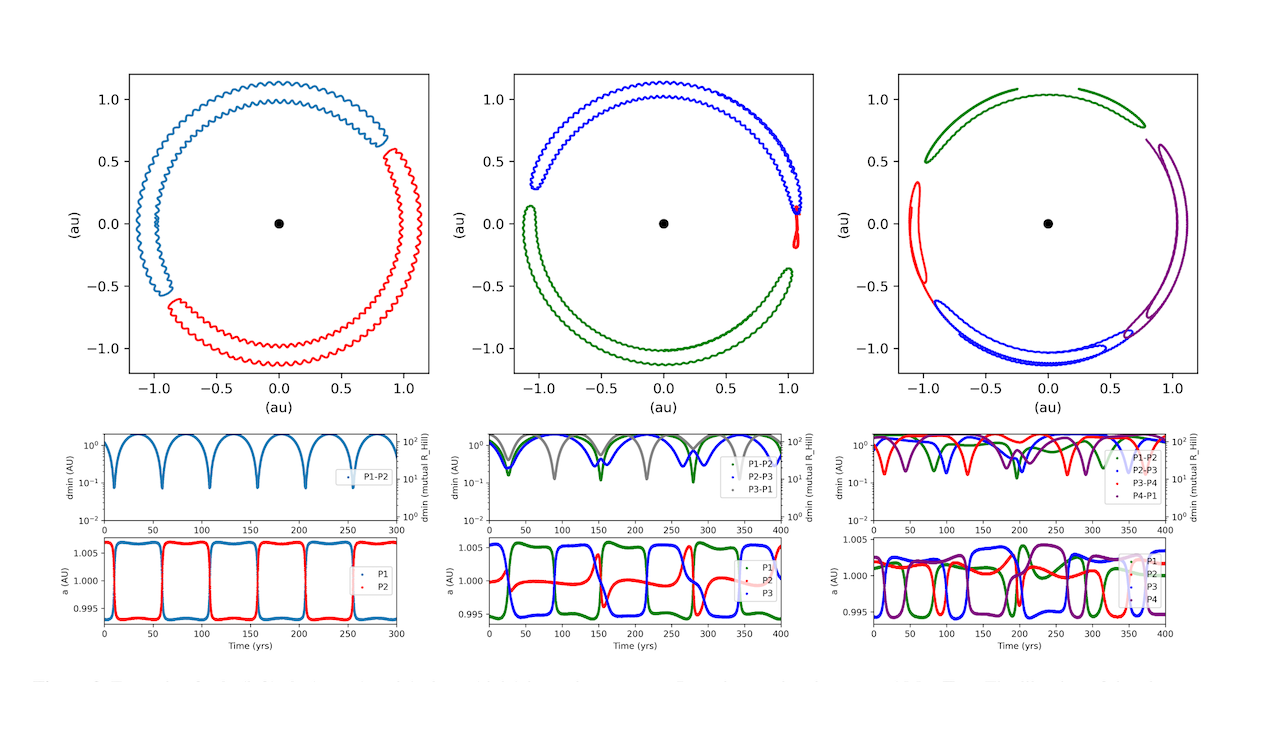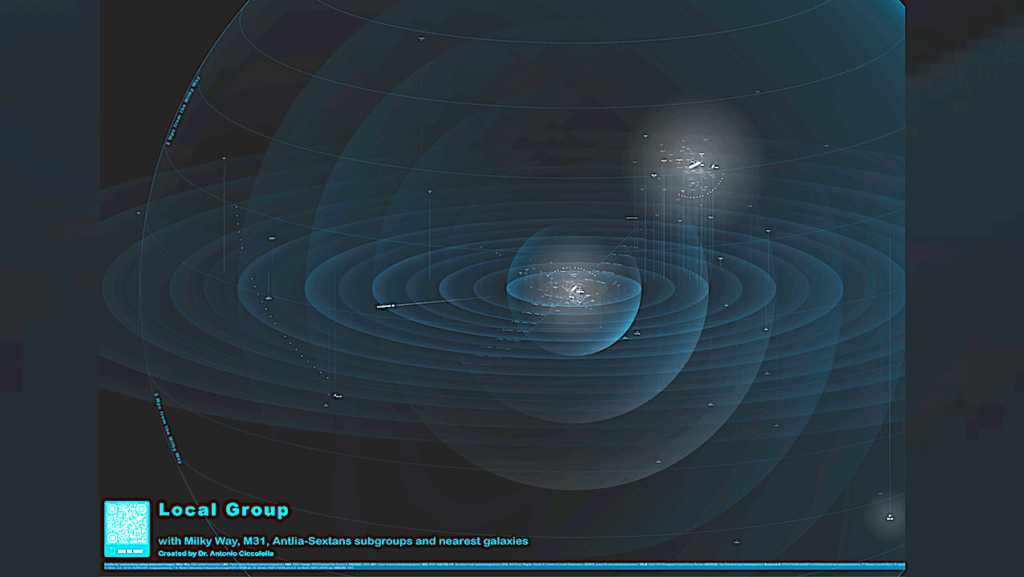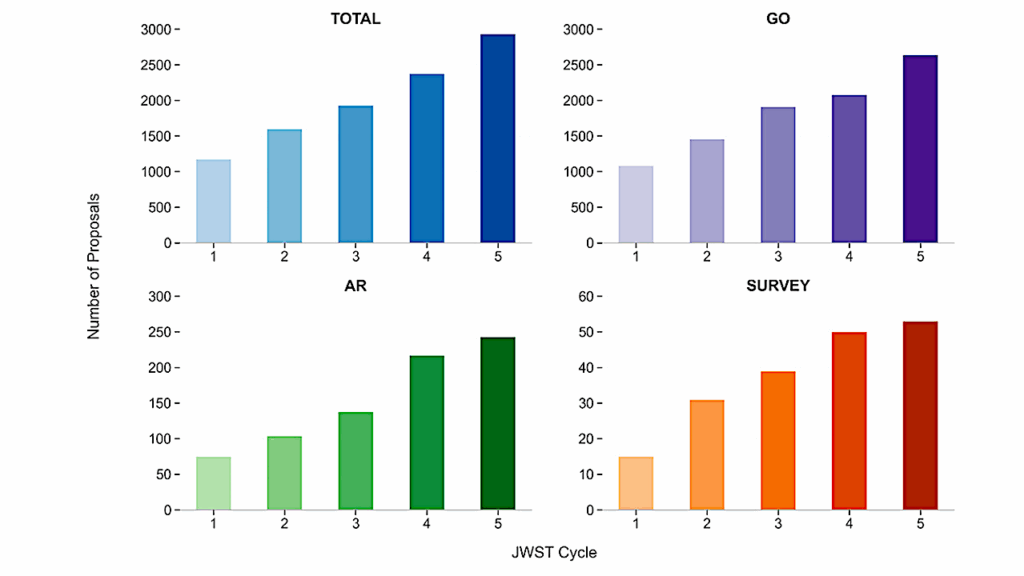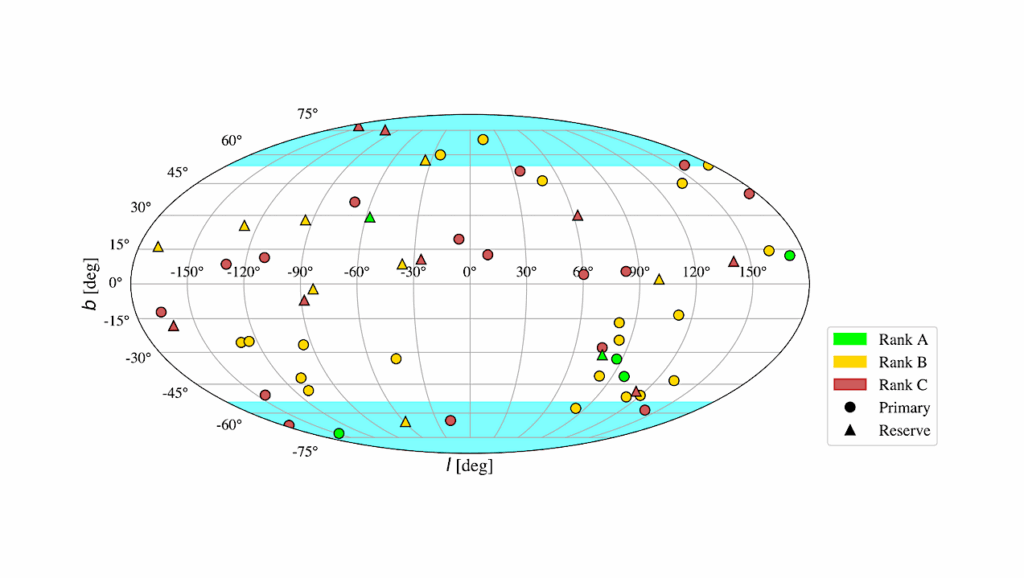Constellations of co-orbital planets: horseshoe dynamics, long-term stability, transit timing variations, and potential as SETI beacons

Co-orbital systems contain two or more bodies sharing the same orbit around a planet or star. The best-known flavors of co-orbital systems are tadpoles (in which two bodies’ angular separations oscillate about the L4/L5 Lagrange points 60∘ apart) and horseshoes (with two bodies periodically exchanging orbital energy to trace out a horseshoe shape in a co-rotating frame).
Here, we use N-body simulations to explore the parameter space of many-planet horseshoe systems. We show that up to 24 equal-mass, Earth-mass planets can share the same orbit at 1 au, following a complex pattern in which neighboring planets undergo horseshoe oscillations. We explore the dynamics of horseshoe constellations, and show that they can remain stable for billions of years and even persist through their stars’ post-main sequence evolution.
With sufficient observations, they can be identified through their large-amplitude, correlated transit timing variations. Given their longevity and exotic orbital architectures, horseshoe constellations may represent potential SETI beacons.
Sean N. Raymond, Dimitri Veras, Matthew S. Clement, Andre Izidoro, David Kipping, Victoria Meadows
Comments: 10 pages, 10 figures. Published in MNRAS. YouTube playlist with animations of horseshoe constellation systems here: this https URL . Blog post here: this https URL
Subjects: Earth and Planetary Astrophysics (astro-ph.EP); Solar and Stellar Astrophysics (astro-ph.SR)
Cite as: arXiv:2304.09209 [astro-ph.EP](or arXiv:2304.09209v1 [astro-ph.EP] for this version)
Journal reference: Monthly Notices of the Royal Astronomical Society, Volume 521, Issue 2, pp.2002-2011
Related DOI:
https://doi.org/10.1093/mnras/stad643
Focus to learn more
Submission history
From: Sean Raymond
[v1] Tue, 18 Apr 2023 18:01:48 UTC (2,799 KB)
https://arxiv.org/abs/2304.09209
Astrobiology








